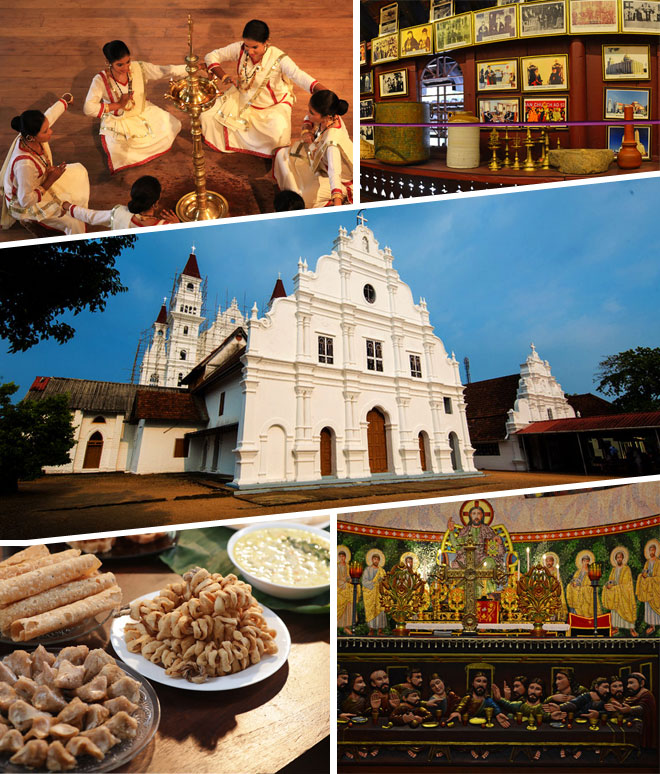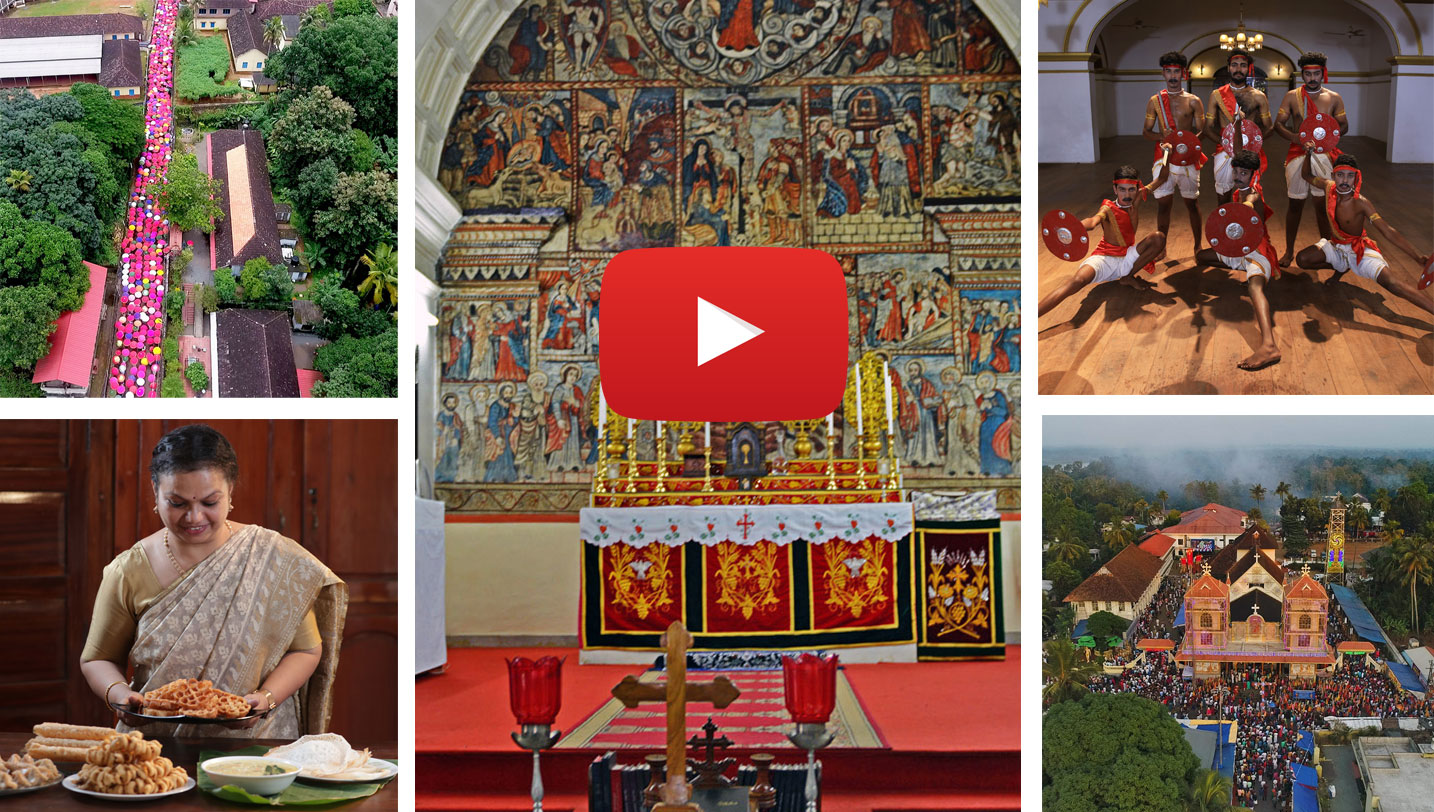Murals and Sculptures of Churches
The abundance of wood and ivory in Kerala caused the sculpting on them to develop from the first Century C.E. The walls of the church constructed at Palayoor by St. Thomas were made of wood. It was James Fenicio, a priest of the Jesus Church, who reconstructed the church using stone and wood, says the book Keraleeya Christava Devalayangalile Silpa Chithrangal written by M. K. Devassy. Houses made of wood walls were seen in Kuttanad, Kottayam, Thodupuzha and Angamaly. Churches were modelled on temples, since Indian sculptors were engaged for the work. Some of the renovated churches have preserved traditional artefacts. The Portuguese, who visited the churches in Malabar, found their walls decorated with sculpted and painted wooden crosses (Raulin, Historica Malabarica).
The more important wooden sculptures within churches are found on the Thora, Altar, Rathal and Sacrari. Thora is also known as Vithanam. Artistically constructed vithanams are still being conserved in certain 9th century churches. The Thora in Kanjoor, Malayattoor and Mulanthuruthy churches seem to have been constructed at the same period and in the same style. The inscription on the thora of Kanjoor Church says that it was constructed in 1403. The practice of installing the statues of saints made in wood or stone in the Altar Backdrop or Rathal started in the 11th century. In the 12th century the number of statues increased and some of them were too tall that they touched the thora. These beautiful carvings add to the beauty of the Sakrari. Rathals became popular after the Trent Council.There are certain churches, still left in Kerala, which conserve the murals and sculptures unspoilt and are listed in the side.
- Santa Cruz Basilica
- St. George Orthodox Church, Cheppad
- St. Mary’s Church, Koratty
- St. George Church, Edathua
- St. Thomas Jacobite Church, Mulanthuruthy
- Martha Mariam Church, Kuravilangad
- St. Mary’s Church, Kanjoor
- St. Hormis Church, Angamaly
- Mar Sabor and Mar Proth Church, Akaparambu
- Akaparambu Roman Catholic Church
- St. Antony’s Church, Ollur
- Martha Mariam Chaldean Syrian Cathedral
- Our Lady of Dolours Basilica
- Our Lady of Lourdes Cathedral
- St. Francis Church
- Thekke Palli, Ernakualm
- Infant Jesus Anglo Indian Church
- CSI Immanuel Church
- St. Joseph Seminary Chapel, Mangalapuzha

